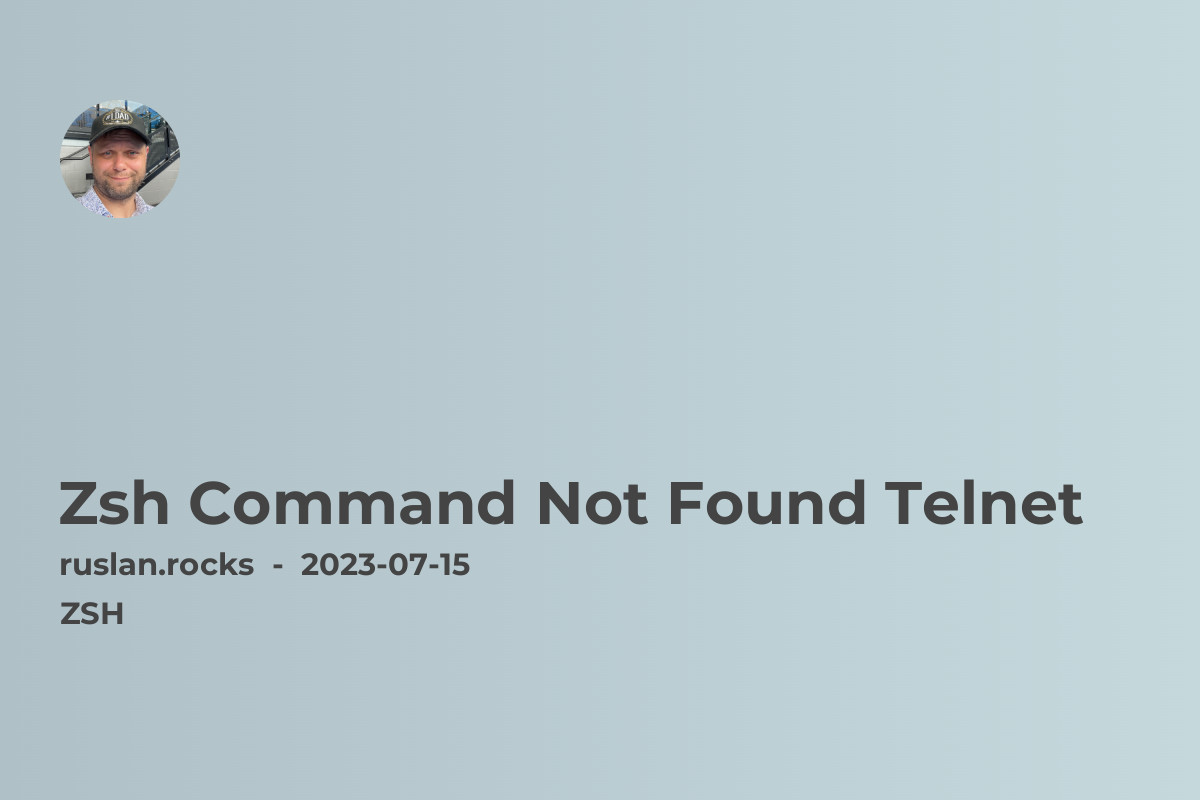- Why Am I Seeing "Command Not Found Telnet"?
- Troubleshooting "Command Not Found Telnet" Error
- Related Articles

Telnet is a popular protocol used to establish a command-line connection to remote servers. However, if you are using the Zsh shell and encounter the error "Command Not Found Telnet," it can be frustrating. In this article, we will explore the causes of this error and provide step-by-step troubleshooting solutions.
Why Am I Seeing "Command Not Found Telnet"?
The "Command Not Found Telnet" error in Zsh typically occurs when the Telnet program is not installed or cannot be found in the system's path. This can happen due to several reasons, such as:
-
Missing Telnet Installation: Telnet may not be installed on your system. Zsh requires the Telnet program to be installed and accessible to execute the command successfully.
-
Incorrect Path Configuration: If the Telnet program is installed, but its location is not included in the system's path, Zsh won't be able to find the command when you attempt to run it.
-
Permissions Issue: Another possibility is that you have the Telnet program installed, but you don't have the necessary permissions to execute it. In such cases, the Zsh shell will display the "Command Not Found Telnet" error.
Now that we understand why the error occurs let's look at some solutions to resolve it.
Troubleshooting "Command Not Found Telnet" Error
1. Check Telnet Installation
The first step is to verify if Telnet is installed on your system. Open the terminal and run the following command:
telnet
If Telnet is not installed, you will see a message stating that the command is not found. In that case, you can install Telnet using the package manager for your operating system. For example, on Ubuntu, you can use the following command to install Telnet:
sudo apt-get install telnet
2. Add Telnet to the System Path
In some cases, Telnet may be installed, but Zsh is unable to locate it because it is not included in the system's path. To add Telnet to the path, you can modify the PATH variable in your shell configuration file (~/.zshrc).
Open the ~/.zshrc file in a text editor and add the following line:
export PATH="/path/to/telnet:$PATH"
Replace /path/to/telnet with the actual path where Telnet is installed on your system. Save the file and restart the terminal.
3. Check Permissions
If Telnet is installed, and its path is correctly configured, but you still encounter the "Command Not Found Telnet" error, it could be a permissions issue. Ensure that you have the necessary permissions to execute the Telnet program.
You can use the following command to check the permissions:
ls -l /path/to/telnet
If the output shows that you do not have executable permissions, you can grant them using the chmod command:
chmod +x /path/to/telnet
4. Update Zsh
Outdated versions of Zsh may have compatibility issues with certain commands, including Telnet. It is advisable to keep Zsh updated to ensure compatibility and access to the latest features.
You can update Zsh by running the appropriate command for your operating system's package manager. For example, on Ubuntu, you can use the following command:
sudo apt-get update
sudo apt-get upgrade zsh
Make sure to restart the terminal after updating Zsh.
Related Articles
To further enhance your understanding of Zsh-related issues, here are some related articles that you may find helpful:
- Zsh Command Not Found Adb
- Zsh Command Not Found Conda
- Zsh Command Not Found Ls
- Zsh Command Not Found Service
- ZSH: Command Not Found: Brew - 2023 Update
By exploring these articles, you'll gain a deeper understanding of common Zsh-related errors and their troubleshooting solutions.
In conclusion, encountering the "Command Not Found Telnet" error in Zsh can be resolved by ensuring Telnet is installed, adding it to the system path, checking permissions, and updating Zsh. By following these troubleshooting steps and referring to related articles, you'll be well-equipped to resolve not only the Telnet error but also other Zsh-related issues you may encounter in the future.
